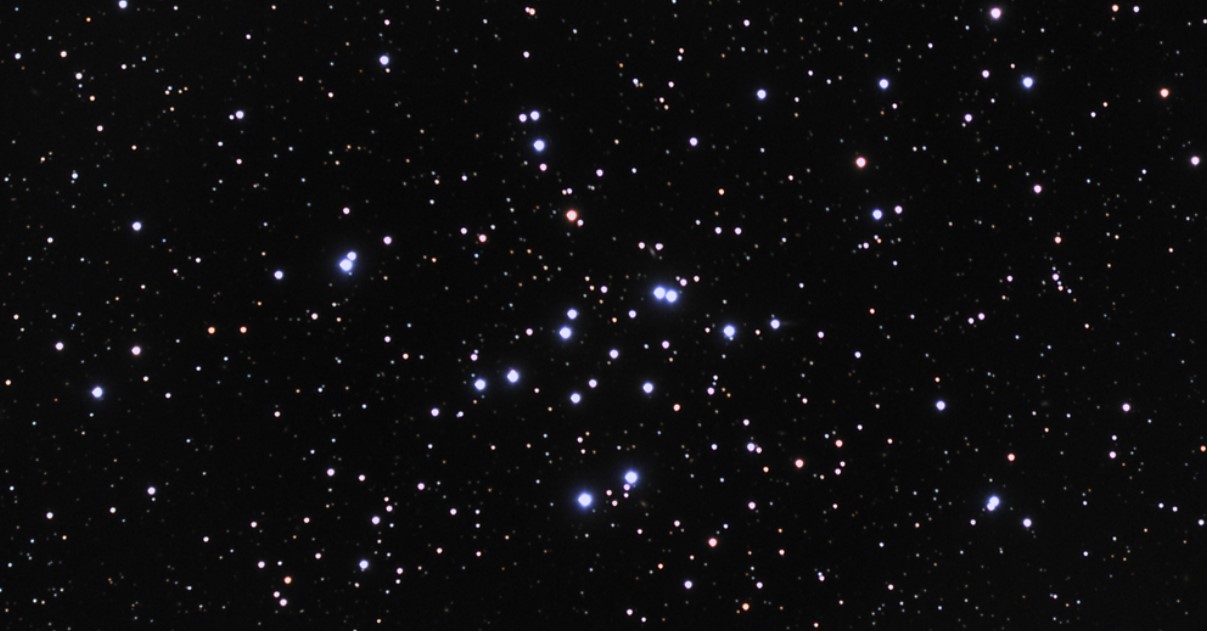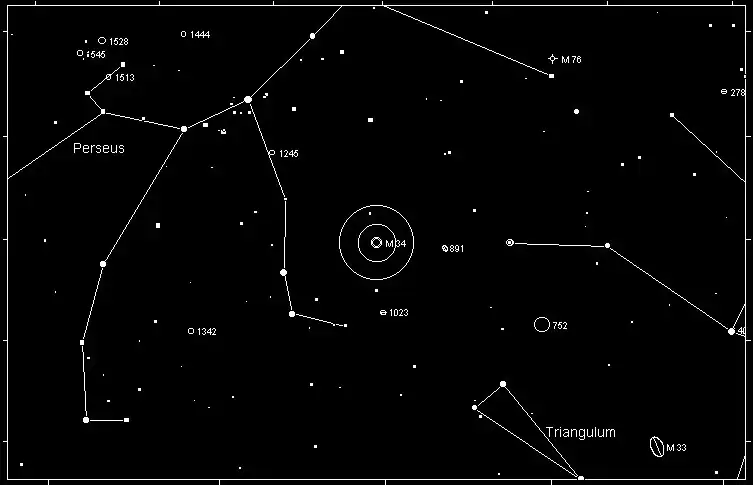Messier 34 (M34), also known as NGC 1039, is a beautiful open star cluster located in the constellation of Perseus. This star cluster lies approximately 1,500 light-years away from Earth and contains around 400 stars. Spanning about 35 light-years in diameter, M34 is a middle-aged cluster estimated to be around 200 million years old.
Through a telescope, M34 reveals a rich field of stars. Many of these stars are bluish-white, characteristic of young, hot stars, though several older yellow and red stars are also visible. This mix of star colors makes it a visually appealing target for amateur astronomers.
M34 has an apparent magnitude of 5.2, making it visible to the naked eye under dark skies as a faint, fuzzy patch. However, binoculars or a small telescope will reveal individual stars and bring the cluster to life.

Prominent Season
Messier 34 is best observed during the fall and early winter months in the Northern Hemisphere. It reaches its highest point in the sky during the months of September to December, making it an ideal target for cool autumn nights.
Constellation and Location
M34 resides in the constellation Perseus, which is home to many interesting astronomical objects, including the famous Perseus Double Cluster and the variable star Algol. Perseus is a prominent constellation visible in the northern sky, especially during the fall and winter months.
Finding M34
To locate M34, begin by finding the constellation Perseus. This constellation is relatively easy to find, situated between the prominent constellations of Cassiopeia and Taurus. Look for the bright star Mirfak, which is the brightest star in Perseus.
Once you've found Perseus, locate the star Algol (Beta Persei), which is well known as the "Demon Star" due to its regular dimming and brightening. M34 is located about halfway between Algol and the bright star Almach in the neighboring constellation Andromeda. With a pair of binoculars or a telescope with a low magnification, you should be able to see the cluster as a concentrated group of stars in this region of the sky.

History
Messier 34 was discovered by the Italian astronomer Giovanni Batista Hodierna before 1654. However, it wasn't until 1764 that the French astronomer Charles Messier added it to his famous catalog of deep-sky objects. Messier’s catalog was originally created to help comet hunters avoid confusing these diffuse objects with comets.
M34 has been studied in detail by modern astronomers who have explored its stellar population and dynamics. The cluster provides valuable insights into stellar evolution and the properties of open clusters in our galaxy.
Conclusion
Messier 34 is a magnificent open cluster that offers stunning views for amateur astronomers and an excellent subject for study by professionals. Its location in the constellation Perseus, coupled with its rich star field and moderate brightness, makes it a rewarding target during the fall and winter months. Whether you are a casual stargazer or an experienced observer, M34 is a celestial gem worth exploring.
